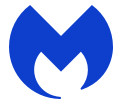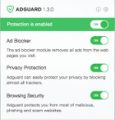What is DefaultTool
DefaultTool is supposed to be an application that will improve the browsing experience, but it is adware. Adware is an advertising malware. It is designed just to present constant pop-ups and/or unwanted adverts using intrusive and at times dangerous ways. Adware can also include other forms of malicious software. It can steal privacy data from the computer and pass it on to third parties. Adware has also been the basis for hacking to gain access to the MAC OS.
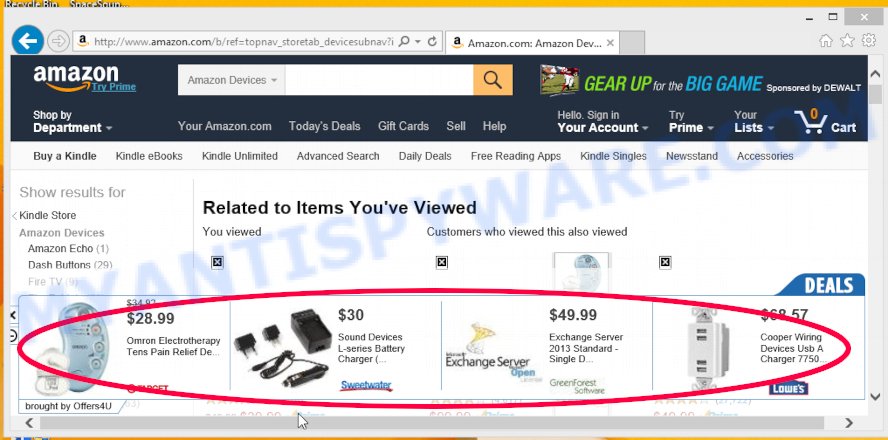
Unwanted ads
Another reason why you need to get rid of adware software is its online data-tracking activity. The DefaultTool adware can gather your Web browsing activity by saving URLs visited, IP addresses, internet browser version and type, cookie information, Internet Service Provider (ISP) and web pages visited. Such kind of behavior can lead to serious security problems or personal data theft. This is another reason why the DefaultTool should be deleted without a wait.
Take a deep breath. Learn everything you should know about DefaultTool removal, how to delete intrusive ads from your browser and MAC system. Find the best free adware software and malicious software removal tools here!
How does DefaultTool get on your machine
These days certain free programs creators bundle PUPs or adware software with a view to making some money. So whenever you install a new free app that downloaded from the World Wide Web, be very careful during installation. Carefully read the EULA (a text with I ACCEPT/I DECLINE button), select custom or manual install type, reject all bundled apps.
Threat Summary
| Name | DefaultTool, DefaultTool 1.0 app |
| Type | adware software, potentially unwanted program (PUP), Mac malware, Mac virus |
| Detection Names | Osx.Adware.Cimpli, OSX.Trojan.Gen, MacOS.Agent-MT, Adware/Adload!OSX, Trojan-Downloader.OSX.Adload, Program:MacOS/Vigram.A, Adware.MAC.Generic and ApplicUnwnt |
| Distribution | Freeware installers, fake update tools, malicious pop up advertisements and torrent downloads |
| Symptoms | When you go to a website, you’re automatically redirected to another web-site that you do not intend to visit, pop-up advertisements won’t go away, unexpected application installed without your knowledge, unwanted web-browser toolbars, unexpected changes in your web browser like displaying new tabs you did not open, fast Internet but slow browsing speeds. |
| Removal | DefaultTool removal guide |
How to remove DefaultTool from Mac
When the adware gets installed on your MAC OS without your knowledge, it is not easy to delete. Most commonly, there is no Uninstall program that simply delete adware software from your MAC system. So, we suggest using well-proven free specialized tool such as MalwareBytes Anti-Malware (MBAM). But the best solution to remove DefaultTool will be to perform several manual steps, after that additionally use antimalware tools.
To remove DefaultTool, complete the steps below:
- Remove unwanted profiles on Mac device
- Delete DefaultTool related apps through the Finder
- Remove DefaultTool related files and folders
- Scan your Mac with MalwareBytes
- Remove DefaultTool from Safari, Chrome, Firefox
- How to stay safe online
- To sum up
Remove unwanted profiles on Mac device
DefaultTool can install a configuration profile on the Mac system to block changes made to the browser settings. Therefore, you need to open system preferences, find and delete the profile installed by the adware software.
Click the System Preferences icon ( ![]() ) in the Dock, or choose Apple menu (
) in the Dock, or choose Apple menu ( ![]() ) > System Preferences.
) > System Preferences.
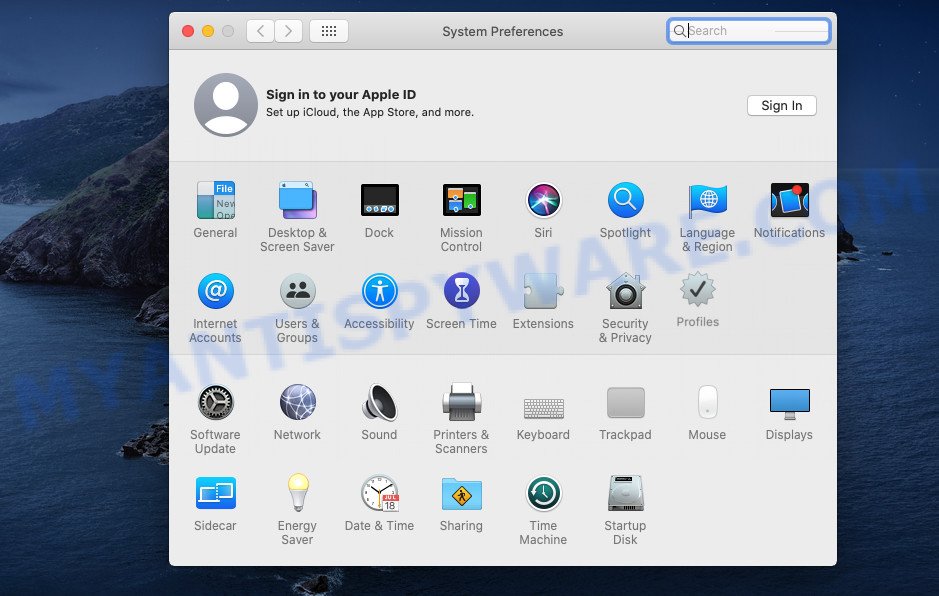
In System Preferences, click Profiles, then select a profile associated with DefaultTool.
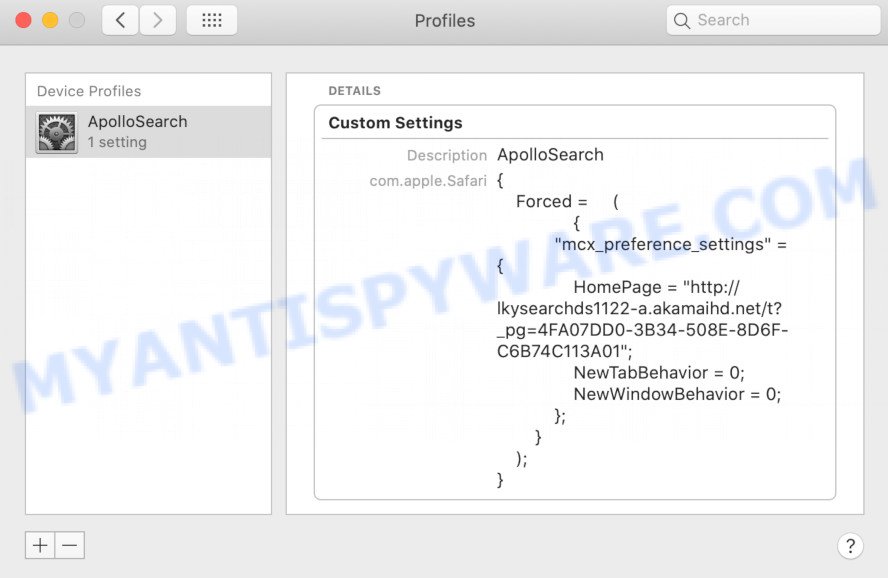
Click the minus button ( – ) located at the bottom-left of the Profiles screen to remove the profile.
Note: if you do not see Profiles in the System Preferences, that means there are no profiles installed on your Mac computer, which is normal.
Delete DefaultTool related apps through the Finder
Check the list of installed software on your Mac computer and remove all unknown and recently installed software. If you see an unknown program with incorrect spelling or varying capital letters, it have most likely been installed by malware and you should clean it off first with malware removal utility such as MalwareBytes Free.
Open Finder and click “Applications”.
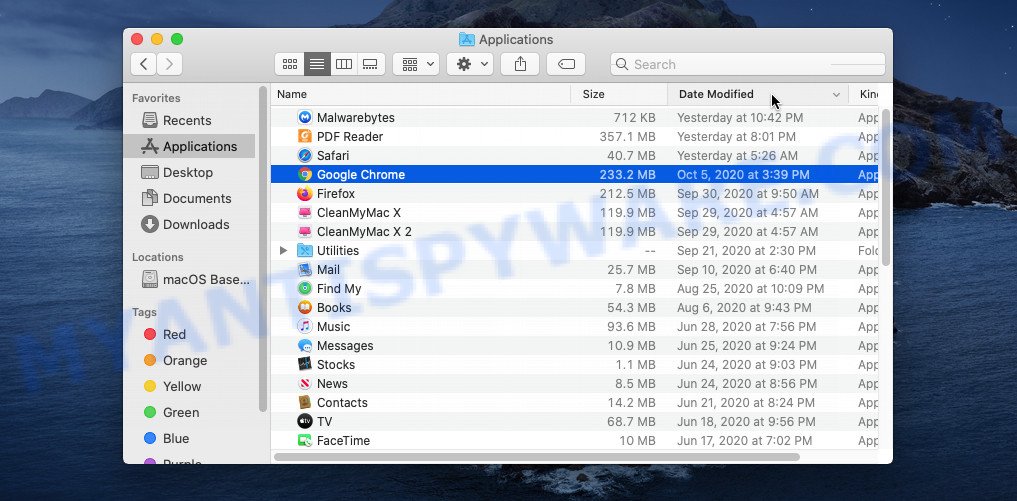
Very carefully look around the entire list of applications installed on your computer. Most likely, one of them is the DefaultTool adware software. Once you have found a questionable, unwanted or unused application, right click to it and select “Move to Trash”. Another method is drag the program from the Applications folder to the Trash.
Don’t forget, select Finder -> “Empty Trash”.
Remove DefaultTool related files and folders
Now you need to try to find DefaultTool related files and folders, and then delete them manually. You need to look for these files in certain directories. To quickly open them, we recommend using the “Go to Folder…” command.
DefaultTool creates several files, these files must be found and removed. Below is a list of files associated with this unwanted program.
- /Library/LaunchDaemons/com.DefaultTool.system.plist
- ~/Library/LaunchAgents/com.DefaultTool.service.plist
- /Library/Application Support/.(RANDOM)/System/com.DefaultTool.system
- ~/Library/Application Support/.(RANDOM)/Services/com.DefaultTool.service.app
Click on the Finder icon. From the menu bar, select Go and click “Go to Folder…”. As a result, a small window opens that allows you to quickly open a specific directory.

Check for DefaultTool generated files in the /Library/LaunchAgents folder

In the “Go to Folder…” window, type the following text and press Go:
/Library/LaunchAgents
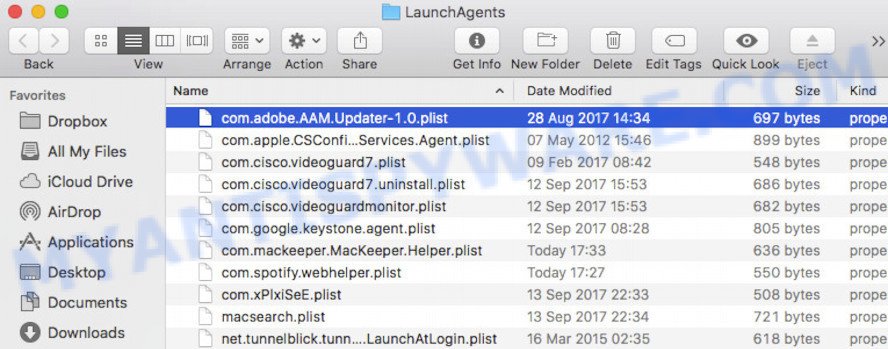
This will open the contents of the “/Library/LaunchAgents” folder. Look carefully at it and pay special attention to recently created files, as well as files that have a suspicious name. Move all suspicious files to the Trash. A few examples of files: macsearch.plist, search.plist, installapp.plist, com.DefaultTool.service.plist, com.google.defaultsearch.plist, , com.net-preferences.plist and com.machelper.plist. Most often, adware, browser hijackers and PUPs create several files with similar names.
Check for DefaultTool generated files in the /Library/Application Support folder

In the “Go to Folder…” window, type the following text and press Go:
/Library/Application Support
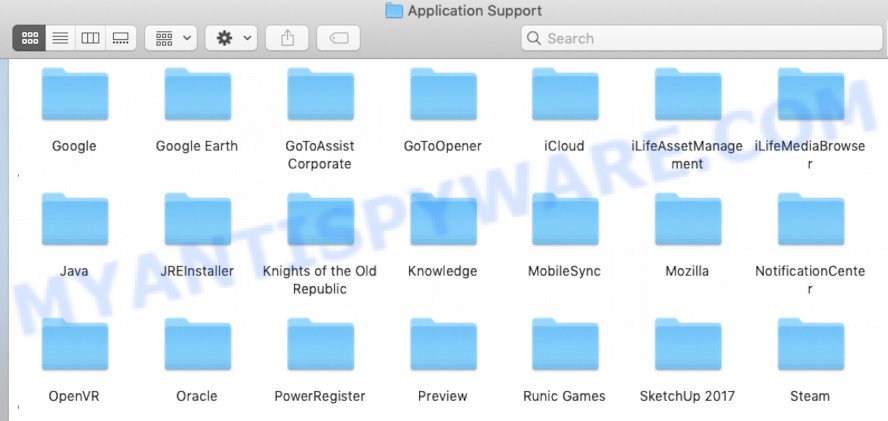
This will open the contents of the “Application Support” folder. Look carefully at its contents, pay special attention to recently added/changed folder. Check the contents of suspicious folders, if there is a file with a name similar to com.DefaultTool.system, then this folder must be deleted. Move all suspicious folders to the Trash.
Check for DefaultTool generated files in the “~/Library/LaunchAgents” folder

In the “Go to Folder…” window, type the following text and press Go:
~/Library/LaunchAgents

Proceed in the same way as with the “/Library/LaunchAgents” and “/Library/Application Support” folders. Look for suspicious and recently added files. Move all suspicious files to the Trash.
Check for DefaultTool generated files in the /Library/LaunchDaemons folder
In the “Go to Folder…” window, type the following text and press Go:
/Library/LaunchDaemons

Carefully browse the entire list of files and pay special attention to recently created files, as well as files that have a suspicious name. Move all suspicious files to the Trash. A few examples of files to be deleted: com.search.system.plist, com.DefaultTool.system.plist, com.installapp.system.plist, com.macsearch.system.plist and com.machelper.system.plist. In most cases, adware, browser hijackers and potentially unwanted programs create several files with similar names.
Scan your Mac with MalwareBytes
If you carefully followed the previous steps, then you should be able to get rid of DefaultTool. Of course, very often browser hijackers, potentially unwanted programs and adware software hides on a Mac, disguising itself as legitimate apps and files. Therefore, in some cases, it is difficult for an inexperienced user to decide whether a particular file is part of potentially unwanted programs, adware and browser hijackers. Therefore, we suggest you to run MalwareBytes Free to scan the Mac computer.
MalwareBytes can be downloaded from the following link.
21024 downloads
Author: Malwarebytes
Category: Security tools
Update: September 10, 2020
Once the download is complete, close all windows on your computer. Further, launch the saved file. Follow the prompts.
The MalwareBytes AntiMalware (MBAM) will automatically start and you may see its main window as displayed on the screen below.
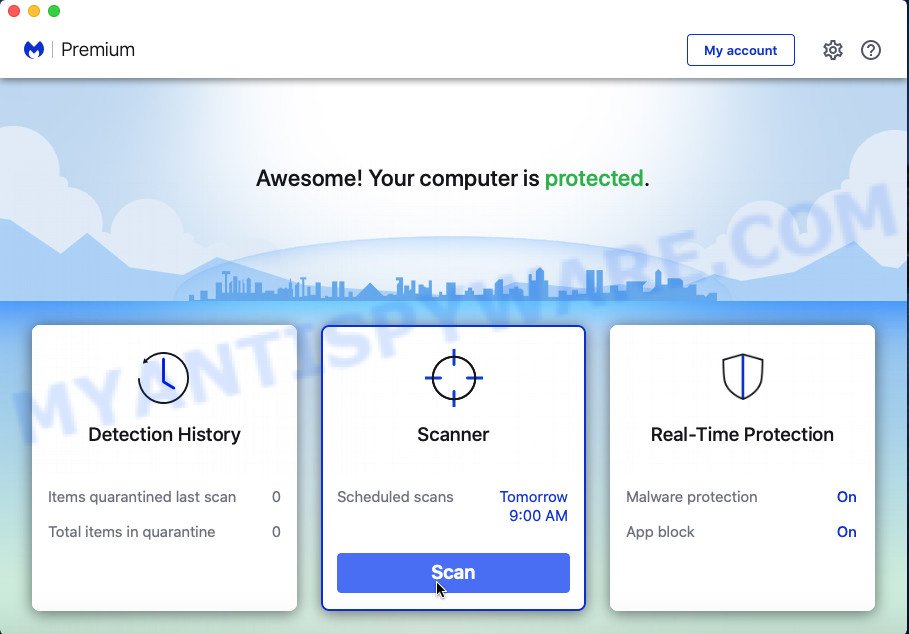
Next, click the “Scan Now” button to perform a system scan with this tool for the DefaultTool adware. A system scan can take anywhere from 5 to 30 minutes, depending on your machine. While the utility is scanning, you may see how many objects and files has already scanned.
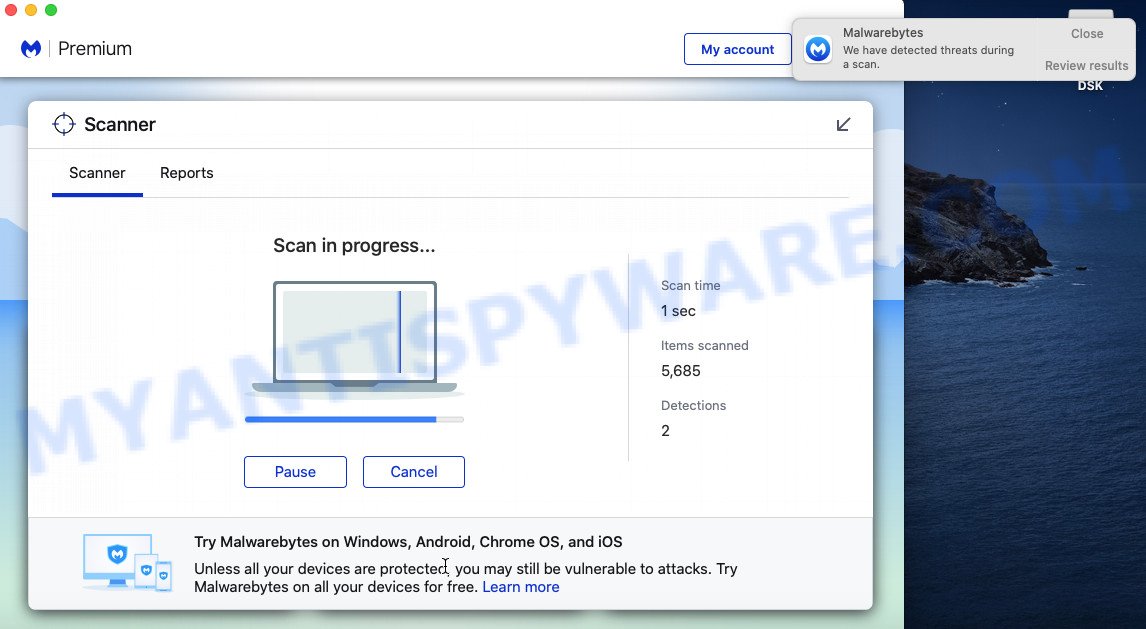
When MalwareBytes Free completes the scan, MalwareBytes Free will display you the results. Make sure to check mark the threats that are unsafe and then click the “Quarantine” button.
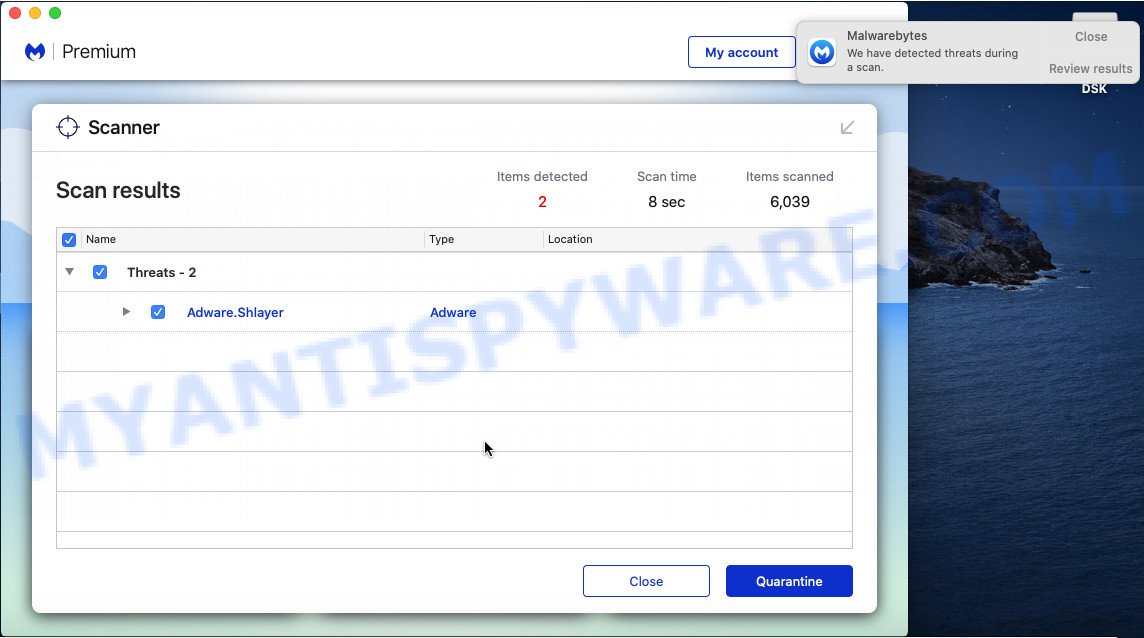
The MalwareBytes Anti-Malware will delete DefaultTool and move the selected items to the program’s quarantine.
Remove DefaultTool from Safari, Chrome, Firefox
If you are still seeing DefaultTool adware that won’t go away, you might have malicious plugins installed on your web browser. Check your browser for unwanted plugins using the steps below.
You can also try to remove DefaultTool adware by reset Google Chrome settings. |
If you are still experiencing problems with DefaultTool adware removal, you need to reset Firefox browser. |
|
How to stay safe online
If you want to remove undesired ads, web browser redirects and popups, then install an ad blocking program such as AdGuard. It can block unwanted ads and pop ups, stop web-pages from tracking your online activities when using the Safari, Chrome and Mozilla Firefox. So, if you like browse the Web, but you don’t like unwanted advertisements and want to protect your MAC system from malicious websites, then the AdGuard is your best choice.
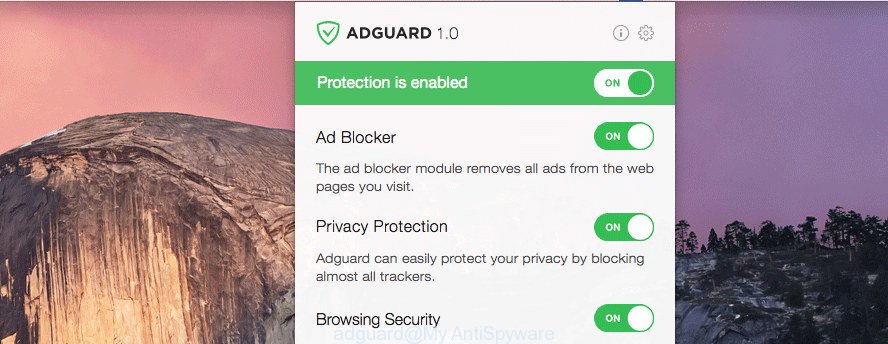
Click the following link to download AdGuard.
3782 downloads
Author: © Adguard
Category: Security tools
Update: January 17, 2018
After the download is done, start the downloaded file. You will see the “Setup Wizard” screen. Follow the prompts.
Each time, when you start your MAC, AdGuard will start automatically and stop annoying popups, block malicious and misleading webpages.
To sum up
After completing the step-by-step instructions shown above, your MAC OS should be clean from the DefaultTool adware and other malware. The Safari, Mozilla Firefox and Chrome will no longer redirect you to various unwanted and malicious web sites. Unfortunately, if the few simple steps does not help you, then you have caught a new adware, and then the best way – ask for help here.
